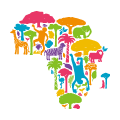1. Approach’s Outline and Features
This approach aims to propose a quantitative evaluation methodology of the applicability of the Emission Reduction Scenario (ERS) and introduce how to design a Forest Reference Emission Level (FREL), focusing on the agricultural sector as the main driver of deforestation for policymakers.
A landscape approach is used to develop a FREL, which is a concept for achieving social, economic and environmental goals on land where productive uses such as agriculture compete with the forest environment and other factors. This approach is characterized by its emphasis on adaptive management, stakeholder involvement and combining the Emission Reduction Activities (ERA) in the agricultural sector.
Keywords
Forest Reference Emission Level, Emission Reduction Scenario,
Landscape Approach, Agricultural Sector
2. Description of the project from which the approach is derived
2-1. Introduction
In Cameroon, where the population is soaring, deforestation and forest degradation are increasing due to increased agricultural land. The Government of Cameroon is committed to climate change action and REDD+ and has been working with the Japan International Cooperation Agency (JICA) since 2019 on a technical cooperation project on Forest Reference Emission Levels (FREL) in the Emission Reduction Scenario (ERS) target areas to reduce greenhouse gas emissions from agricultural and forest sectors.
2-2. Details of measures taken
- Given that increased demand for agricultural land due to population growth and associated deforestation are increasing GHG emissions, population growth, agricultural growth and other factors must be included when developing the FREL methodology.
- sub-national FREL tool was developed that incorporates several proposed emission reduction activity factors within Cameroon in 2020, such as in the agricultural sector. This tool was developed while referencing the FREL developed by the International Institute of Applied Systems Analysis (IIASA) based on the Global Biosphere Management Model (GLOBIOM) in 2017.
- A landscape approach was used to develop FREL, which is a land management concept intended to achieve social, economic and environmental goals on lands where productive uses like agriculture compete with the forest environment and other factors.
- Pilot activities to reduce deforestation due to pressure from the agricultural sector are being considered for cocoa production under forest shade, improved cassava cultivation methods, afforestation activities in devastated savannas and biochar agriculture. The FREL tool is to be improved, taking into account GHG emission reductions enabled by implementing the pilot activities.
(Perspectives on sustainability)
The sustainability of this approach is expected to be boosted by deepening the knowledge and experience of government officials in charge of the FREL construction through training and other activities while formulating the Emission Reduction Scenario to be conducted.
3. Analysis of the approach
3-1. Impact
The landscape approach used to develop the FREL is characterized by its emphasis on adaptive management and stakeholder involvement. In terms of positive impact, the project would contribute to social welfare, using land in agriculture and forest sectors in the policy of the Cameroon government.
3-2. Lessons learned
By helping to develop a tool to calculate FREL for REDD+ by themselves, government agency officials involved in GHG emission reductions in the forest sector will enhance their ability to analyze scenarios for emission reductions and accumulate knowledge and experience of government agencies. The tool developed by the approach would be related to the agricultural sector with verification of ERA and as such, would highlight the usefulness of the FREL-setting in the cross-cutting sector between forests and agriculture.
4. Relevant information
| NbS Approach Category | 2-1. 7 |
| Title of the project from which the approach is derived | Capacity Development Project for Sustainable Forest Eco-System Management in Republic of Cameroon |
| Country | Republic of Cameroon République du Cameroun |
| Biome | Tropical |
| Implementing term | 2019/1/20 – 2024/1/19 |
| Implementing organizations | Ministry of Environment, Nature Conservation and Sustainable Development (MINEPDED), Ministry of Forest and Wildlife (MINFOF), Ministry of Economics and Land Use Planning (MINEPAT), Ministry of Agriculture and Village Development (MINADER), REDD+ Technical Secretariat |
| Supporting organizations | Japan International Cooperation Agency (JICA), Japan Forest Technology Association (JAFTA) |
| Report/Tool/Guideline | |
| Contributors to this article | Kazuhiro Yamashita/JAFTA |

